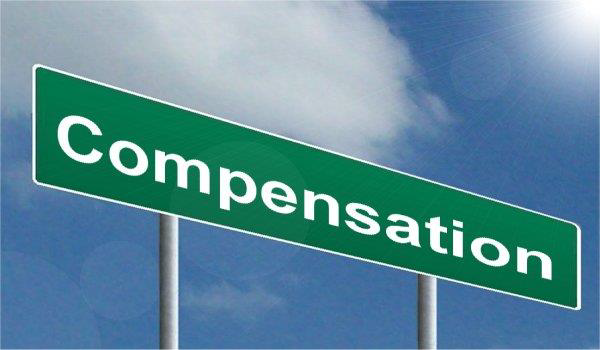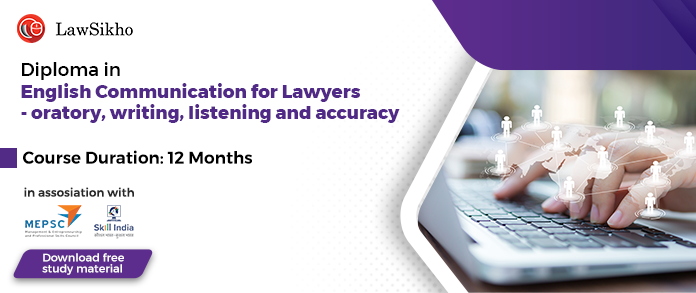This article is written by Abhishek Arya pursuing a Diploma in Law Firm Practice: Research, Drafting, Briefing and Client Management. This article has been edited by Yashprada (Associate, Lawsikho) and Ruchika Mohapatra (Associate, Lawsikho).
This article has been published by Sneha Mahawar.
Table of Contents
Introduction
“We are approaching the new era with 21st-century technologies, 20th-century governing processes, and 19th-century governance structures.”
-Harold A. Limestone, Portland University
A total of 4,37,396 road accident cases were reported in India during 2019. According to a report, 1,54,000 people died in road accidents in 2019 alone. Further, there is no estimation of unreported cases. While road accidents are a major killer in our country, they affect the survivors in several ways, one of which is the process of making claims for compensation before the Court.
In this article, the author will be discussing the present mode of settlement of motor accident claims in India and how technological intervention via online mediation can make it efficient, accessible, and transparent.
For a better understanding let us take a hypothetical case. Mr. Bimal was walking on the road and was hit by Mr. Gangu, who was travelling in a car. The car was insured and Mr. Gangu was the owner and driver of the vehicle. As a result of the accident, Mr. Bimal was injured and had to be hospitalized for some time. Since Mr. Bimal was employed, he also suffered a loss of income. Now, Mr. Bimal wants to recover all his expenses and losses.
Current scenario: The Motor Accident Claims Tribunal (MACT)
First of all, Mr. Bimal or someone else would report the accident to the police. The police will then register a case and investigate to understand how it happened, where it occurred, who was at fault etc.
Suppose, post their investigation the police find out that Mr. Gangu was responsible. They file all the documents in the court and a criminal trial begins for prosecuting Mr. Gangu for his negligent driving. This trial is only for punishing Mr. Gangu for negligent driving and has nothing to do with the compensation claim.
Now, let’s come to the trial for claiming compensation.
Mr. Bimal approaches the police and collects all the relevant documents. He also approaches his employer and the doctor to get the salary certificate and relevant medical records respectively.
Then, he approaches a lawyer who drafts his petition for compensation and files it before the MACT and the trial begins. His lawyer, with the approval of MACT, sends the request to all the parties i.e. Mr. Gangu (owner and driver), the insurance company of the car, employer of Mr. Bimal, the doctor who treated him, any eyewitnesses of the accident, and others, to appear before MACT and give their statements. They all appear and prove the facts of the case. The MACT ascertains the liability of the parties. Afterwards, the MACT decides the compensation and awards it to Mr. Bimal.
As per the procedural course of action, these cases can be finalized in 5-6 hearings (5-6 months) but generally, it takes more hearings and an average of 3 years to get it done. Let’s see what are the sticking points where delay occurs.
Sticking points
- In antiquated systems, parties have to physically appear before the MACT to give evidence. This causes tremendous delay as the lawyer has to call every party on different days because of the paucity of time with MACT.
- Procedural delays ingrained in the system.
- Lawyers delay the case by adjourning the hearing on frivolous grounds.
- General delay due to huge workload in the lower judiciary and poor technology adoption.
- Delay in depositing compensation amount by the insurance company after the decision of MACT.
- Interruptions in court hearings due to factors beyond control e.g. Pandemic.
Proposed alternate model for resolution
Mr. Bimal gathers all the relevant documents from the police, hospital, his employer, etc. to prove his case. He gets consultation from a lawyer and instead of approaching the MACT, approaches the insurance company with or without any legal help. The company conducts a private investigation to verify the facts of the accident (which is also being done these days) and refers the case to its in-house mediation department or an external independent mediation agency (private mediation agency) which then scrutinizes the authenticity of documents presented by Mr. Bimal. Documents can be authenticated through self-declaration (self-attested) or any other technological intervention. If the need arises, parties can be contacted directly.
After scrutiny, the mediation department or the external independent mediation agency decides the quantum of compensation after consultations with both the insurance company and Mr. Bimal and makes a recommendation to the insurance company and Mr. Bimal. If the recommendation is accepted by both the insurance company and Mr. Bimal, then good, if not, the case can be transferred to MACT to follow the traditional process.
This model can prevent the majority of motor accident compensation cases from reaching the ever exploding docket of courts, as in many cases facts are straight and all parties are traceable. The problem occurs in cases where any party is not traceable due to a fictitious address or where insurance or license is fake. Such cases are even a challenge for MACTs.
There is also an alternative in which the MACT itself refers the case to a Mediation agency or Online Dispute Centre. Such agency decides the dispute and refers the case back to MACT to pass an order for compensation. This idea has been developed by one senior advocate of the Supreme Court of India and requires further deliberation.
Benefits of this model
To victim
- Cost-efficient justice delivery;
- Timely settlement;
- Opportunity cost can be saved;
- Reduced mental agony.
To insurance company
- Will save the cost of hiring lawyers at district courts;
- Will prevent cases where the lawyer of the insurance company colludes with a lawyer of the victim;
- Improvement in customer satisfaction.
To country
- Decongesting lower judiciary;
- Can reduce the need for spending on judicial infrastructure;
- Improved legal health of people, psychological benefits;
- Better access to justice;
- More disposable income with people to spend productively.
Challenges
Structural challenges
- Digital infrastructure, the problem of last-mile connectivity (help may be taken from Common Services Centre);
- Digital literacy (even district court lawyers are not tech-savvy);
- Digital divide which runs parallel to the class divide.
Behavioral challenges
- Poor awareness about ADR mechanisms;
- Lack of trust in non-government entities (given the current atmosphere for online mediation in the country, this problem may get resolved in the future);
- Resistance from members of the bar- Fear is explained by behavioral economists as a ‘status quo’ bias, which is a preference for things as they are in the present;
- Irrational Rejectionism- Dismissal of a system with which the critic has no direct personal experience. This bias is rooted in the fear of the unknown.
Operational challenges
- Availability of qualified neutrals (this problem is being addressed e.g. making mediation a compulsory subject in law schools);
- Enforcement of mediation outcomes;
- Conflict of interest with insurance company appointing a mediation agency;
- Data privacy and security.
Government’s Take
A question comes to mind – why is it that the government, despite being cognizant of issues regarding current judicial infrastructure, is not making necessary improvements. An understanding of the same is as follows:
- In the present state of things where the judiciary is still some distance away from having a fully functional ODR capability, it will serve itself well if it can encourage disputants to attempt resolving disputes through private ODR platforms.
- Proceedings of courts are governed by laws that were enacted way before the era of information technology. These laws need a significant overhaul to make them compatible with current technology. It is being done but in a piecemeal fashion. Also, a complete overhaul means major disruptions across the whole judicial functioning. It needs significant bandwidth to take such bold and disruptive decisions.
- The government may think that it is prudent enough to promote ADR mechanisms in cases where it is easily implementable rather than burning resources for a system that needs significant repairs. This intention is indicated with the following examples:
- New Delhi International Arbitration Centre Act passed in 2019;
- Amendments to Arbitration & Conciliation Act in 2019 & 2020;
- Draft Mediation Bill, 2021 (to be discussed in the current session of Parliament);
- ODR Handbook was released in April 2021 by top policy think tank NITI Aayog;
- ODR Policy Plan for India was released in November 2021 again by NITI Aayog;
- Bar Council of India making Mediation a compulsory subject in law schools.
Apart from the government, the judiciary is also getting vocal in its support of alternative dispute resolution mechanisms. Here is the judgment of the Supreme Court:
M.R. Krishna Murthy vs. New India Assurance Co. Ltd.
- In this case, the Supreme Court directed the government to consider setting up a Motor Accidents Mediation Authority (MAMA) for speedy disposal of motor accident claims.
- Regretfully, as per current knowledge, no such authority has been set up by the government to date. While the noble intentions of the apex court can’t be doubted, this judgment opens up the pandora box as it proposes to make pre-litigation mediation necessary. When the lower judiciary is significantly understaffed and there is a lack of training, education & awareness in mediation where would you find trained mediators to absorb all the workload diverted from MACT?
Conclusion
There is a need for outcome-based thinking. People don’t want soldiers, they want security. People don’t want architects, they want durable, useful, and beautiful buildings. Similarly, they don’t want accountants, they only want their financial information to be sent to authorities in compliant form. In general, people don’t want professionals, they want their job done. And when such a job can be done reliably, efficiently, and cost-effectively, people will move to such alternatives. Through the present alternative model, an attempt can be made to provide people with such an alternative.
References
- https://ncrb.gov.in/sites/default/files/Chapter-1A-Traffic-Accidents_2019.pdf on 30th November 2021.
- https://ncrb.gov.in/sites/default/files/Chapter-1A-Traffic-Accidents_2019.pdf
- https://www.niti.gov.in/sites/default/files/2021-11/odr-report-29-11-2021.pdf
- https://www.scconline.com/blog/post/2020/08/17/bci-introduces-mediation-with-conciliation-as-a-compulsory-subject-in-law-colleges-from-academic-session-2020-2021/
Students of Lawsikho courses regularly produce writing assignments and work on practical exercises as a part of their coursework and develop themselves in real-life practical skills.
LawSikho has created a telegram group for exchanging legal knowledge, referrals, and various opportunities. You can click on this link and join:
Follow us on Instagram and subscribe to our YouTube channel for more amazing legal content.
 Serato DJ Crack 2025Serato DJ PRO Crack
Serato DJ Crack 2025Serato DJ PRO Crack








 Allow notifications
Allow notifications



